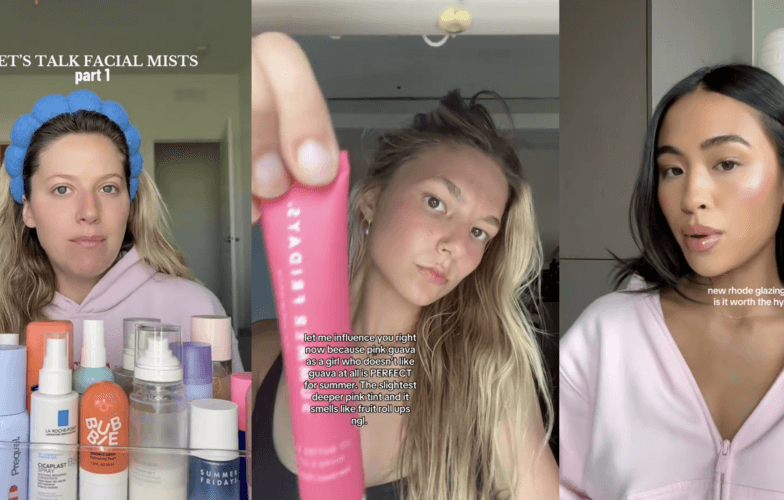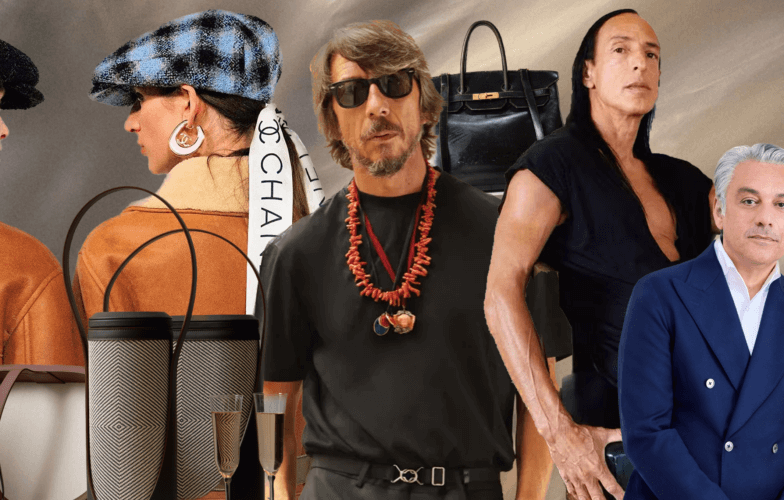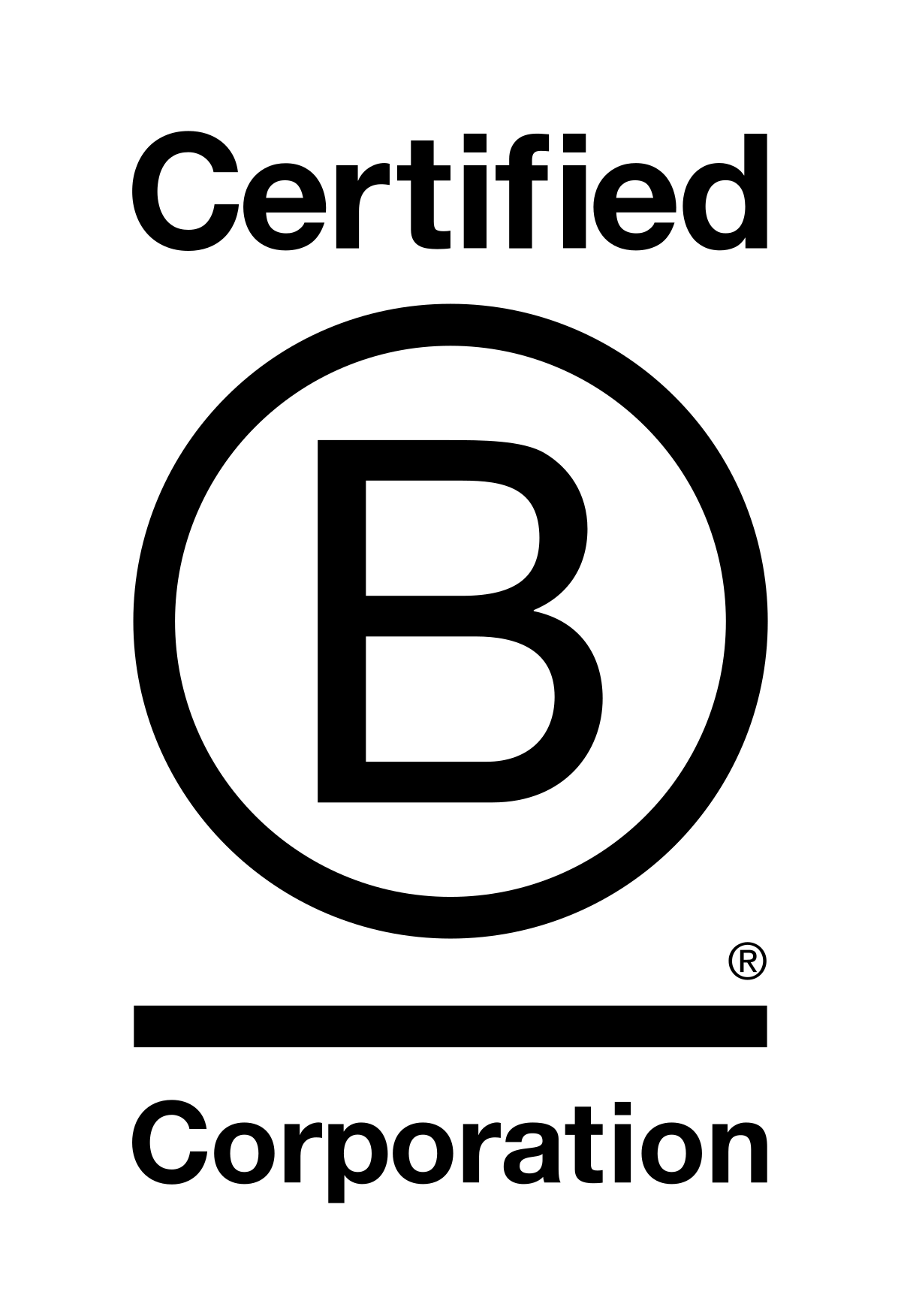
TikTok Beauty Trends - February 2024
Each month, NellyRodi beauty experts present their selection of the most interesting trends seen on TikTok. Here’s what’s happening in February 2024!
THE "MOB WIFE": THE RETURN OF THE FEMME FATALE
A new aesthetic trend on TikTok is taking the platform by storm: #mobwifemakeup or “mob wife” (53.3 million views) is poised to surpass the understated and impeccable “clean girl” trend of 2023.
The “mob wife” look draws inspiration from the wives of mobsters in films from the 1970s and 1980s. Fur coats, oversized sunglasses, gold jewelry and elaborate hairstyles are the defining features of this character. The style is reminiscent of Marianne Hill in The Godfather: Part II (1974), Diane Keaton in The Godfather (1972) and, more recently, Lady Gaga as Patricia Gucci in House of Gucci, released in 2021.
For makeup, the “mob wife” look is characterized by intense smoky eyes, heavily lined lips, and pronounced bronzer. The result is intentionally imperfect with no apologies made.
@ronhiree First outfit ✨ #mobwife #outfitideas #fyp #mostviralvideo #fashiontok #outfitinspo #richwoman ♬ Love In Portofino – Dalida & Raymond Lefèvre Et Son Grand Orchestre
This new aesthetic contrasts with the “quiet luxury” – or even “boring luxury” – that dominated conversations last year. The “mob wife” look appears to be the antithesis of “that girl,” the always-perfect character with discreet makeup (“no-makeup makeup”) and flawless skin thanks to an elaborate skincare routine. More than just another TikTok aesthetic trend, this shift signals new consumer expectations. They’re tired of the image of the overly reserved girl; they aspire to a return to glamour, a more outspoken femininity and perhaps a more carefree attitude. Olivier Rousteing (Balmain) recently expressed his fear of “quiet luxury.”
It’s worth noting that the “mob wife” aesthetic aligns with Gen Z’s passion for revisiting looks from past decades. The younger generations nostalgically reclaim the codes of eras they didn’t know, inventing new personas to explore. After the skincare-focused years following the pandemic, this “mob wife” trend heralds a big comeback for makeup with more intense and decidedly glamorous looks.
@froartistry Im so here for this trend! #mobwifemakeup #mobwifeaesthetic #mobwifewinter #mobwife #makeuptrends ♬ original sound – Classic Tunes 02
SPOTLIGHT ON BEAUTY TECH
Consumers on TikTok are seeking ways to improve their skin at home with almost professional results. The common thread in recent beauty innovations is light.
The hashtag #lighttherapy has accumulated 193.2 million views on TikTok, reflecting the growing enthusiasm for luminous beauty tech tools. Whether in the form of futuristic masks or massaging devices, they all promise deep skin treatment. On the platform, brands, skin influencers, and users tout smoother, less oily skin and a noticeable reduction in wrinkles, dark circles, eczema and acne. These tools enable consumers to incorporate professional skin treatments into their daily lives at home.
@maddigood Blue light therapy for my skin right now >> #skincareroutine #snatchedface #snatchedjawljne #lighttherapy #lighttherapyforface #bluelightbenefits #skincarehacks #skintransformation ♬ Use this sound for good luck – 𝗠𝘂𝟳𝗽𝗵
While most LED masks on the market claim overall skin improvement or anti-aging benefits, a new generation of accessories focused particularly on treating acne is emerging. In the form of small devices to stick on pimples or light-emitting wands, these new beauty tools make imperfections disappear in seconds. These more portable, highly targeted formats appeal to Generation Z, which is heavily represented on the platform. The Unfolding Gen Z Beauty study by NellyRodi reports that 44% of this generation prioritizes immediate effects over long-term results. The quest for quick results and the expertise embodied by technological objects fuels the excitement around these new products.
@luminancered It aleays makes my day when this happens🥺🥺 #fy #foryou #fypage #foryoupage #you #fypシ #fypシ゚viral #popular #drama #tiktokmademebuyit #xybca #publicinterview #acnetreatment #acne #fans #surprise #viral ♬ original sound – Luminance Medical
The benefits of blue and red lights are now being harnessed for the face, body and even hair. At the Consumer Electronics Show (CES) in Las Vegas in January, L’Oréal introduced an airless hair dryer based on infrared light – a revolutionary technology that optimizes drying without damaging the hair fiber, reduces energy consumption and expands the product’s initial promise by treating the hair. Consumers, increasingly pragmatic and knowledgeable, seek effectiveness through beauty tools that evolve with their expectations. This shift gives brands new formats and benefits for rethinking or creating new routines combining cosmetics and technology.
BEAUTY DESTINATIONS
After the pandemic, the wellness tourism market experienced significant growth, reaching $880 billion in 2023; and it’s expected to surpass the symbolic $1 trillion mark in 2025 (Wellness Tourism Market Report 2023, 360 Research Reports). To help choose the next destination, travel influencers on social media increasingly provide recommendations on ideal places for relaxation with the best addresses for dining. On the other hand, beauty influencers are becoming more international, offering recommendations on beauty products from abroad and giving advice on finding the best deals when traveling abroad.
In beauty tourism, France possesses a unique asset: its pharmacies. With over 252 million views on TikTok (#frenchpharmacy), these places have become essential stops for many tourists wanting to purchase skincare products unavailable elsewhere. Pharmacies are the primary points of sale in France for buying beauty products, making the country a unique case worldwide. The success of French dermocosmetics is a great example of this enthusiasm and resonates particularly well with younger generations. These products stand out for their technical expertise and the promise of performance bordering on medical expertise. Additionally, the role of a sales advisor, such as a pharmacist, provides reassurance in choosing skincare products, all within an apothecary-style setting.
In Paris, the pharmacy on Rue Du Four has embraced this trend and become a must-visit for many foreign tourists.
@laurammarian Citypharma should be one of the tourist attractions in Paris! Everything is discounted, it has 3 floors and you and find all French and many international beauty brands 😍 #citypharma #citypharmaparis #citypharmacy #frenchpharmacy #frenchpharmacyskincare ♬ original sound – Laura | fashion & lifestyle
South Korea, a leader in skincare innovation, has successfully developed a soft power and attractiveness around #KoreanBeauty. On TikTok, many tourists share their shopping experiences (#koreatravel with 1.4 billion views), and certain places in Seoul are reference points for shopping. For example, the specialty shops in the Myeongdong district are known for selling beauty products at very affordable prices.
@_w.bella I think this one is my favorite ! #skincare #skincareroutine #seoul #myeongdong #pourtoi #fypシ゚viral #asmr #asmrskincare #travel #voyage #asmrshopping #skincareasmr #coree #coreedusud #korea #allmaskstory #kbeauty #beauty #beaute ♬ son original – Wiwi 💜
The customer experience is catered to with high quality store decorations – especially in the Gangnam district – as well as a wide choice of services offered. On TikTok, travelers who visit various spas in the capital show off the sophistication of the facial treatments they receive. Clinics offer often high-tech, personalized routines that are affordable and accessible for non-Korean speakers.
@laxtoluxury The first skincare cIinic I went to in Seoul, Korea, what I got done and how much it cost! #koreanskincare #kbeauty #koreatravel #korea #seoul #gangnam #traveltips #laxtoluxury ♬ Boy With Luv – BTS
The country has also gained a reputation for its competitive prices in cosmetic surgery, attracting increasingly younger and international clients. The most commonly performed operations are facelifts, rhinoplasty and eyelid surgery. On TikTok, many tourists share their experiences, documenting the different stages of a facelift and showing day-to-day results. In Korea and on social media, plastic surgery almost seems to be a leisure activity where everything is filmed, documented and shared like an adventure journal with the community.
@brigittepatton Korean Plastic Surgery experience at JW.. I got threads to build collagen and refresh my face in Seoul👩🏽⚕️🏥 #visitkorea #traveltiktok #thisiskorea #kbeauty #seoul #plasticsurgery ♬ on the street (with J. Cole) – j-hope & J. Cole
Beauty and aesthetic services have become a significant tourist attraction for the country, and the industry has adapted to a young, connected, and international clientele. South Korea is the country where tourists purchase the most skincare products, ahead of Japan and France.



